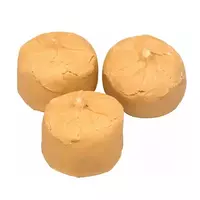Confectionery fudge

Any professional confectioner will tell you that the appearance of any confectionery or sweetness plays one of the primary roles. After all, indeed, the impartial appearance of any, even the most delicious confectionery can scare off potential buyers. Therefore, like hundreds of years ago, most confectionery products are decorated with special techniques and methods. Among the variety of confectionery decorations, it is worth paying special attention to confectionery fudge.
Confectionery fudge composition
This product opens up ample opportunities for both professionals and beginners who are just beginning to master confectionery skills at home. Confectionery fudge is nothing more than a fine crystalline substance, which is obtained by cooling the sugar syrup. It is noteworthy that the composition of confectionery fudge, in addition to sugar and water, may include other ingredients. It is also worth emphasizing that the type of product directly depends on the composition of the confectionery fudge.
In modern confectionery production, the following types of confectionery fudges are distinguished:
classic sugar confectionery fudge;
chocolate confectionery fudge;
vanilla pastry fudge;
milk or cream confectionery fudge;
fruit pastry fudge.
The calorie content of the confectionery fudge will also depend on the type of product. Not surprisingly, the calorie content of confectionery fudge made of chocolate will significantly exceed the performance of a cream or fruit product. Confectionery fudge is distinguished by its characteristic snow-white color, as well as its delicate taste. This decoration has been used in confectionery since ancient times and is currently pastry fudge, along with glaze and chocolate, one of the three most common and widely used confectionery jewelry.
Confectionery fudge should have a uniform and plastic consistency. As a rule, confectionery fudge is used for external coating of various bakery, as well as homemade products. In addition, confectionery fudge is used in the manufacture of cakes, cakes, eclairs, cookies and other baked goods. It is confectionery fudge that is used to decorate festive Easter cakes or the famous bun called "Rum Baba. "
On the shelves of modern grocery stores, you can easily find a confectionery mixture for making various types of fudge. All you need to do is just mix the contents of the bag with water, and then gradually heat the resulting mixture to a temperature in the 45S while stirring continuously. In order to get the necessary consistency of pastry fudge, you should carefully monitor the temperature. Since when overheated, your confectionery fudge will lose all its distinctive taste and consumer characteristics.
Often, confectionery fudge is called a subspecies of glaze. On the one hand, this statement is confirmed, since confectionery fudge is actually used and is made practically the same as glaze. However, confectionery fudge is used not only as a decoration of finished sweets. Candy is produced on the basis of confectionery fudge. We think most residents of our latitudes are familiar with sweets made from creamy confectionery fudge.
confectionery fudge 62 kCal
Energy value of confectionery fudge (Ratio of proteins, fats, carbohydrates - ju):
Proteins: 0.57 g (~ 2 kCal)
Fats: 1.71 g (~ 15 kCal)
Carbohydrates: 10.03 g (~ 40 kCal)
Energy ratio (bj | y): 4% | 25% | 65%
 Español
Español Français
Français Português
Português Русский
Русский 简体中文
简体中文 繁體中文
繁體中文 日本語
日本語 한국어
한국어 العربية
العربية Türkçe
Türkçe Қазақ
Қазақ Deutsch
Deutsch Italiano
Italiano Українська
Українська
